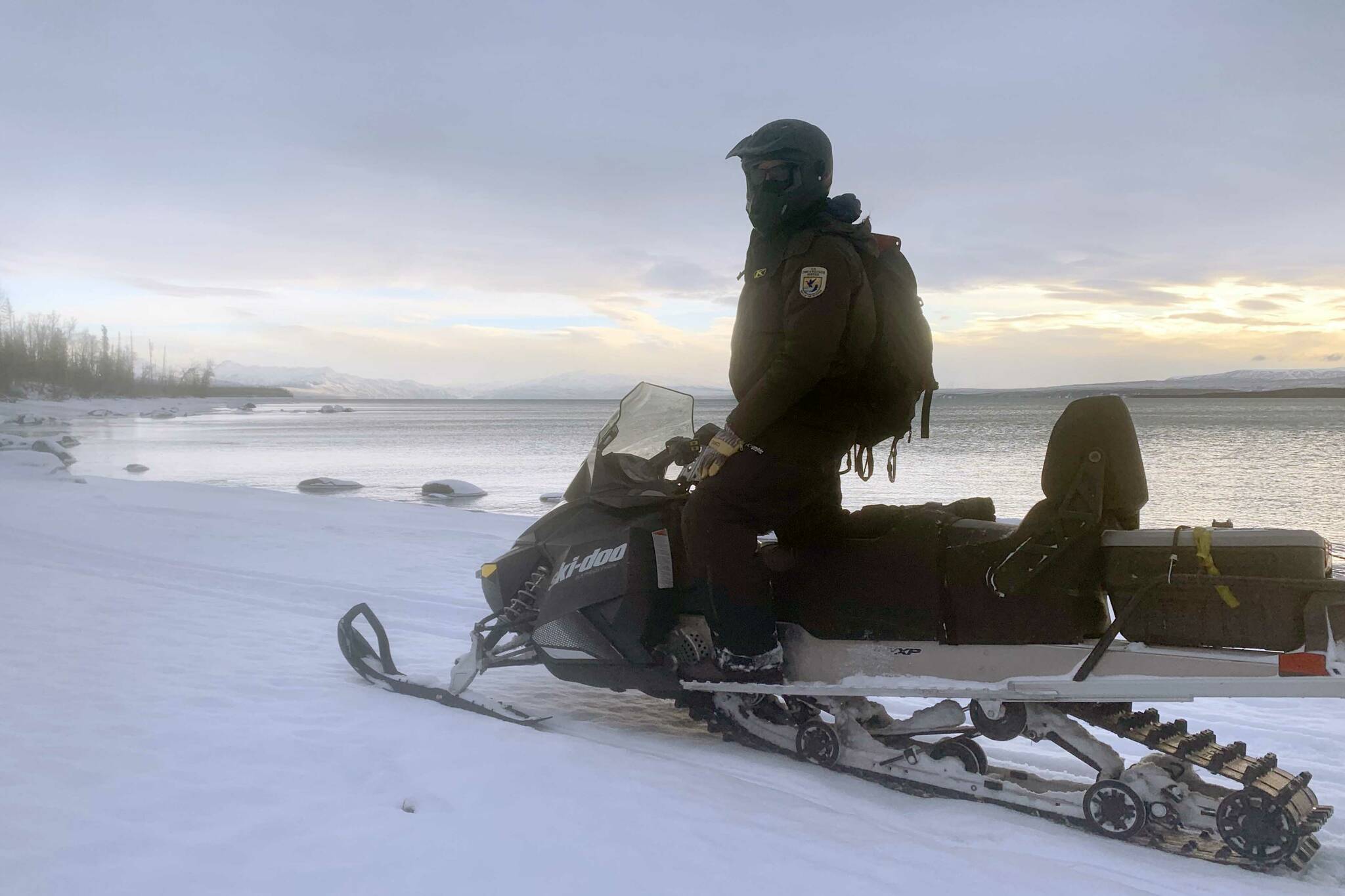If you spend any time in the backcountry, it’s bound to happen: an ankle sprain halfway into a day hike; afternoon wind unexpectedly turns a glassy lake into a tempest; overflow mires your snowmachine while you’re far from the trailhead.
It’s really not a question of if but when you’ll get stuck, delayed or stranded and need to either self-rescue or keep yourself and your party safe until help arrives.
I’ve had several of these experiences, and each one reminds me of why I lug around a stuffed backpack, even on a day trip. It often feels like overkill, but I’ve heard enough stories to heed this advice when venturing into the backcountry: “It’s better to have it and not need it than to need it and not have it.”
Now that the Kenai National Wildlife Refuge has opened up to snowmachines for the season, I’ve been getting my gear ready and have had a chance to reflect on some of those “day trips” that have turned into overnights when the conditions changed, and it was safer and smarter to stay put. I’ll concede that the adage of “the more you know, the less you need” is probably correct, but only to a point.
I’ve witnessed amazing feats accomplished with just paracord and duct tape, along with a healthy dose of creativity and ingenuity. Still, some items are just too valuable or convenient not to have on hand.
Some of the staples in my pack, when I head into the backcountry, include extra food and water (or a way to purify water); a multitool; waterproof matches, a lighter and fire starter; a warm change of clothes, including socks, gloves and winter hat; first aid kit; my cellphone and satellite messenger; a headlamp with extra batteries; and some of that paracord and duct tape.
A satellite messenger is an excellent device to have and has replaced sat phones for most of our operations. We use an InReach, but other models are also on the market.
These devices enable your cellphone to send and receive text messages, including an SOS, anywhere on Earth. It also has a GPS and mapping capability that come in handy when you’re trying to stay found.
Whatever you decide to communicate with those back home, let someone know in advance of your plans when to expect you back, and who to contact if you’re overdue.
I always bring bear spray, and it is a good practice to pack it, even in winter, because the timing of den entrance and emergence varies. As I said, “It is better to have it and not need it, then not have it and need it.”
Longer trips farther afield require more gear like a sleeping bag, sleeping pad, camping stove and fuel, additional food and water, a pack of playing cards, and a solar charger for electronics.
Beyond what supplies we have on hand are the knowledge and skills we possess, and to that end, I want to recommend taking a Wilderness First Aid or First Responder course. One of the best tools I received to prepare myself was the opportunity to take a Wilderness First Responder course a couple of years ago.
An incredibly skilled teacher from Alaska taught the class and pushed us to prepare for any number of medical situations that can occur in the backcountry and how to respond appropriately.
Beyond the wide-ranging course material, the class taught me new things about myself, my experiences and my inclinations. It was hands down the most intense and beneficial training I’ve ever been involved in.
If your plans this winter include snowmachining on the refuge, we want to remind you that several areas are always closed to snowmachine use within the refuge. These areas include the headquarters area on Ski Hill Road, Skilak Wildlife Recreation Area (except Hidden, Kelly, Petersen and Engineer lakes that are open to provide snowmachine access for ice fishing), the Swan Lake and Swanson River Canoe Systems, and all areas above timberline except in the Caribou Hills.
Now that we’ve thought about staying safe outdoors, it’s time to get on out there!
Dan Saxton is the cabins manager at the Kenai National Wildlife Refuge. You can find more information on the Refuge at http://kenai.fws.gov or http://www.facebook.com/kenainationalwildliferefuge. The Refuge Notebook is published twice a month and you can find past Refuge Notebook articles at https://www.fws.gov/kenai-refuge-notebook.


